How many leads did you reach this month?
If you’re a marketer, chances are you already have a report handy with the answer.
Monthly reporting is crucial to the success of any business. It gives a glimpse into which marketing efforts are paying off and which you need to improve (or eliminate.)
Without a data-driven report, it’s easy to fly blind.
But how often should you be looking at your data? Is one report once a month enough to give a clear picture of your ROI?
Not necessarily.
The end of the month report is fairly standard among marketers. But there are instances where you might need to track your marketing metrics more often.
Weekly, or even daily, tracking is sometimes necessary to meet your end goals.
A lot can happen in a day or even an hour.
Take a look at this daily traffic spike, for example:
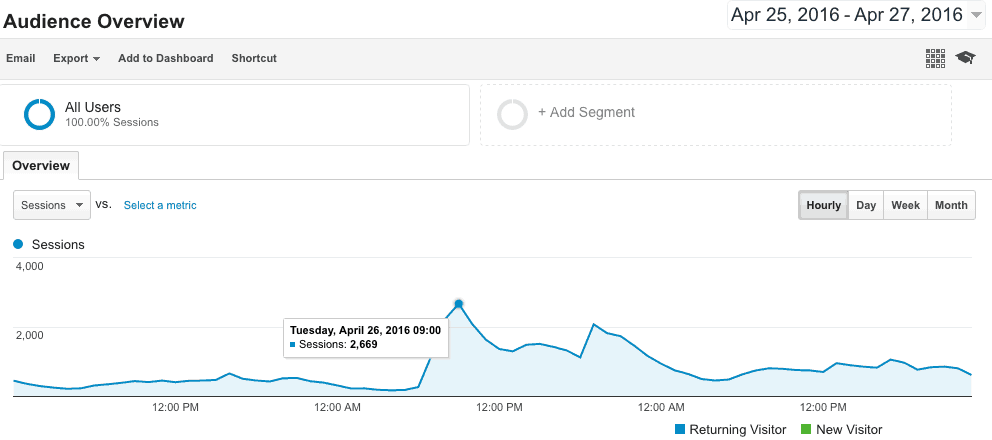
In certain cases, daily activities can have long-lasting impacts.
A sudden spike in traffic may throw off your whole month’s report. The sooner you can catch the little things, the better your overall reporting will be.
Here are the metrics you should be monitoring and the ones you can leave for the end of the month.
Daily Metrics You Should Be Tracking
Your end of the month report shouldn’t surprise you.
Let’s say you’re near the end of the month and looking at your end of the month report. If your traffic numbers have dropped significantly or your engagement is noticeably low, that’s a problem.
Daily reporting allows you to see the small fluctuations and patterns in traffic and engagement throughout the month. Reporting daily allows you to you make better choices on a regular basis.
By the time you get around to pulling your monthly report, you’re not surprised at all.
Here are the metrics you want to track on a daily basis.
- Web Traffic
Tracking daily web and blog traffic won’t necessarily give you the same insight as a monthly report will. That’s because traffic numbers may fluctuate every day.
So, you’re not necessarily looking for major patterns.
What you want to watch out for is any significant spikes or drops in traffic.

Changes like this could be a flood of bots or spiders crawling your site, or spam, or any number of things that could potentially throw off your final monthly report.
- Social Engagement
The few hours (or sometimes minutes) after you post to social media are critical.
Most social media posts have a shelf life, and some are relatively short.
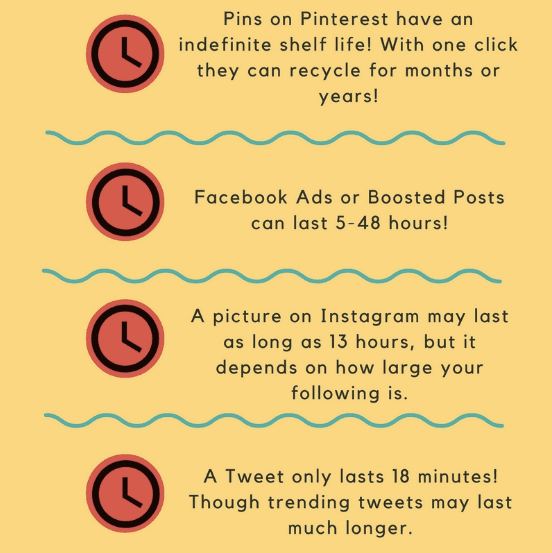
Every time you post something to social media, you should be taking a peek at your data within the first 24 hours.
Analyzing your data quickly will help you see if there were posts that did exceptionally well or if there were a few that failed miserably.
If you review this data daily, the performance of your social media marketing won’t surprise you at the end of the month.
You will always know whether your posts are working.
- PPC Cost Per Click
Like your web traffic and your social media engagement, your PPC ads will have their daily ups and downs.
The key metric that you want to track daily is your cost per click (CPC).
CPC is an ever-changing variable in the PPC algorithm.
Similar to your web traffic, sudden increases or decreases may have a significant impact on your campaign success.
These changes can be signs of:
- Prices of bids that have changed across the ad space
- Improvements in landing page quality score
- Changes in level of competition
- Improvements in ad relevance
- Improvements in CTR
Keeping an eye on your CPC on a daily basis allows you to adjust bids as needed, so you’re not wasting money on ads with no ROI.
You may also want to watch your click-through rates (CTR) and quality score.
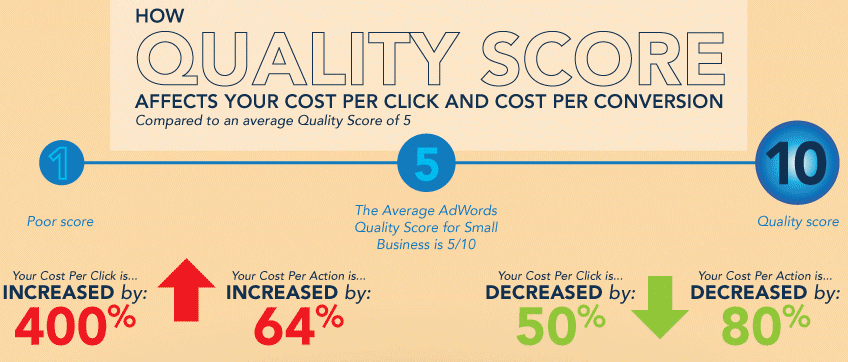
Again, you don’t want to get to the end of the month and find out you wasted money on ads.
The goal of tracking metrics daily is not just to focus on the little changes in your data. Rather, it’s keeping an eye out for significant changes that might affect your monthly goals.
You may not always have to create a daily report, but you should be keeping an eye on them nonetheless.
Weekly Metrics You Should Be Tracking
You may or may not create a daily report of your traffic and engagement metrics. Regardless, you should be creating weekly reports.
Weekly reporting allows you to identify larger patterns in your data. At the same time, it still gives you time to change things before they go into your monthly report.
For example, if you have a spike in web traffic one day, but the rest of your traffic for the week remains normal, then you’ll know it was an off day.
But if you notice three or four days each week have significant spikes in traffic, there may be an underlying problem you need to address.
Here are the metrics you should be tracking and reporting on a weekly basis.
- Leads and conversions
Leads and conversions won’t fluctuate nearly as much as your daily traffic, but you could still see ups and downs throughout the month.
As your campaigns are running, you want to check on the number of leads you’re generating.
If you notice that lead performance is dropping over a 10+ day period, you may need to look into your marketing strategies and ask, “What have we changed?”
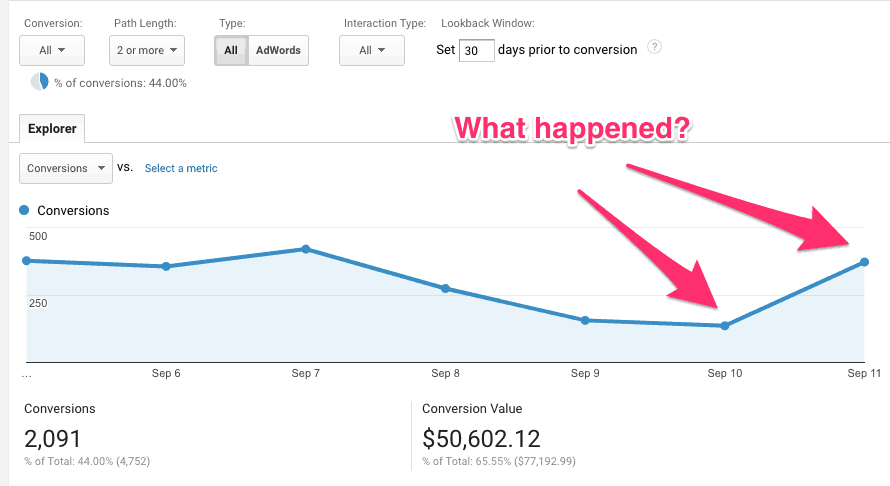
Did you send out an email newsletter in the last week? Did you bid on a new ad group for your PPC campaigns?
Did you publish any new blog posts or change your landing pages?
If you are making changes to your website or marketing, you want to know the effect on your leads as soon as possible.
A weekly report should show you whether or not you’re heading in the right direction.
- Blog Traffic
If you regularly engage in content marketing with a blog, you want to track engagement weekly.
Just as social media posts have a shelf life, blog post traffic can drop off relatively quickly.
For the majority of posts, traffic peaks on the day it’s published but dwindles by an average of 90% within one week.

Ideally, your posts would continue to drive traffic throughout the whole month.
But if you wait until the end of the month to pull a report, your posts may disappoint you. You may find that certain ones didn’t perform better, without realizing that the drop-off was normal.
If you knew that a post’s traffic was waning during the week, you could republish it or promote it again to get another bump in traffic.
Watching blog traffic weekly will give you more insight into which posts are performing well.
- Monthly Goal Progress
You want to get ahead of your monthly goals so that you can course correct if needed.
The adjustments you make by looking at your weekly data can add up over time.
What were you hoping to see once you pulled your monthly report?
Did you want to see a certain number of leads? Did you want your web traffic numbers to be a certain number? Did you want to see your bounce rates lowered by a certain percentage?
Whatever your monthly goals are, start pulling reports on them each week. Then compare them against the data from last month.
Are you seeing enough of an improvement compared to last month?
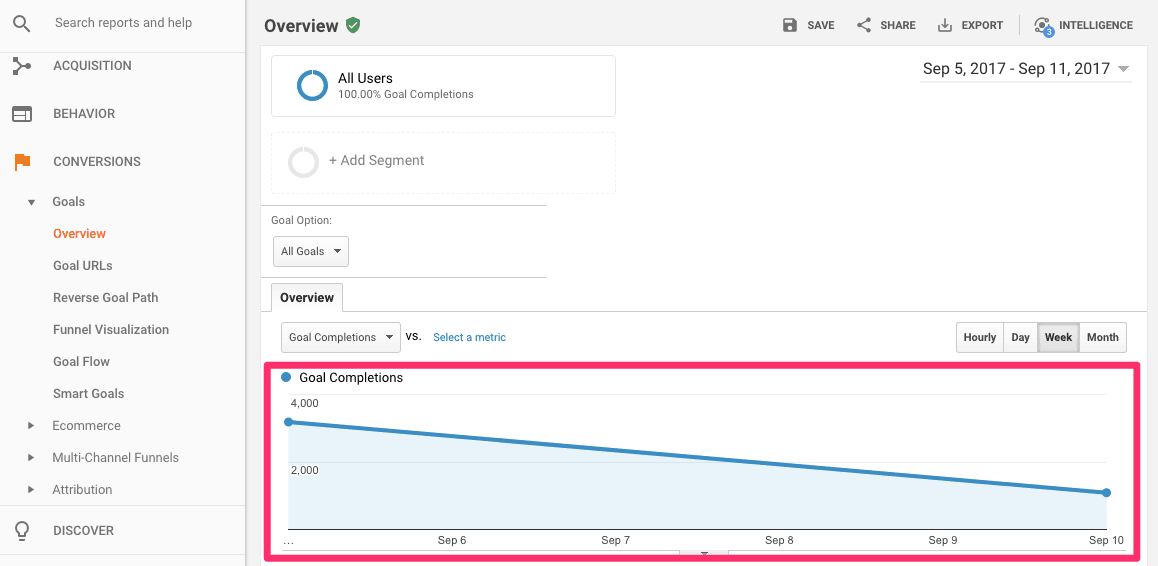
Will you be able to keep the pace before you pull your next report?
By the time it comes to pull your monthly report, it will be too late to make any changes.
Additional Metrics to Add to Your Monthly Report
You should include all the above in your monthly report.
Since you’ve been tracking them already, there should be no surprises when pulling that data.
But there may be some other metrics that you want to include in the report that you don’t necessarily need to monitor weekly or daily.
Here are a few metrics that you only need to monitor once a month.
- Channel Traffic
Monitoring web traffic daily or weekly will allow you to see patterns or any immediate issues. However, you still want to look at your overall traffic for the month and how it compares to previous months.
You want to look for any major decrease or increase from one month (or quarter) to another.
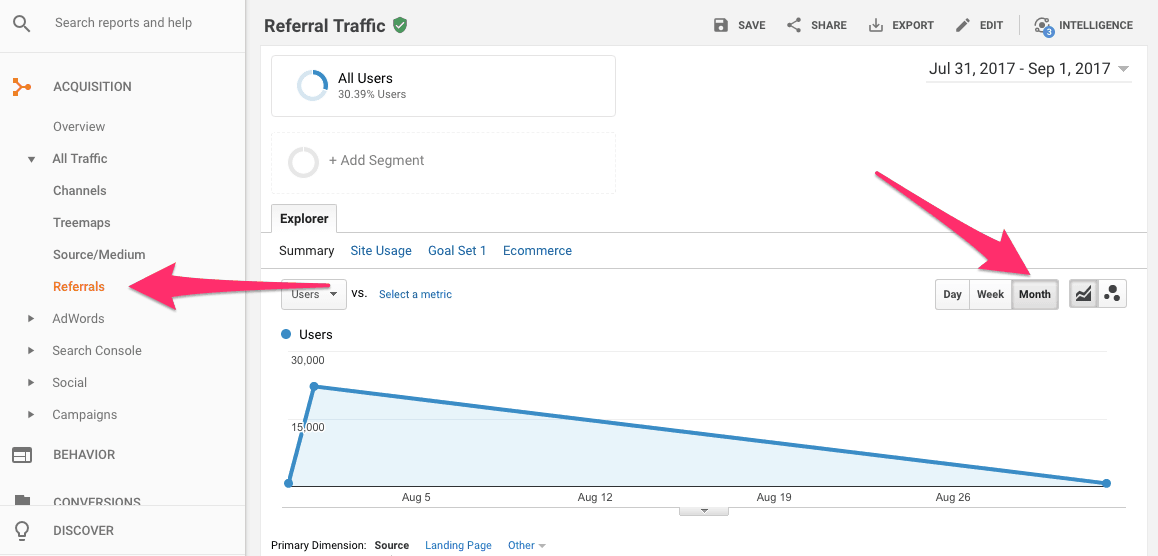
You will want to track traffic by each channel to identify problem areas. Take a look at a few of the following:
- Email Traffic – Visits from emails that you’ve sent out.
- Direct Traffic – Visits from sources that are offline, such as brand recognition or print advertisements.
- Organic Traffic – Organic visits that occur naturally from unpaid search results.
- Paid Traffic – Visits that are a result of advertising you paid for.
- Social Media Traffic – Visits from your social media efforts.
- Referral Traffic – Visits from another site (excluding search engines).
For example, you may see that certain months tend to perform better than others for some channels. You can put more focus on these channels during those times of the year.
This analysis will also help you pinpoint the channels that are succeeding, not just the individual tactics.
- PPC Campaign ROI
You should be monitoring the ups and downs of your CPC and CTR on a weekly or daily basis.
But regarding overall campaign success, you should be able to see the bigger picture at the end of each month.
For example, if you noticed changes to your CPC and rebid, the outcome of that bid should show up in your end of the month report.
That’s the “big picture” of those small changes you’ve been making throughout the month.

If you wait until the end of the month to pull a report, you might see that certain campaigns (like #4 in the above example) were way overpriced.
Noticing this earlier in your weekly or daily reports will give you a chance to adjust.
But your monthly report should show you how all the little metrics fit together.
It will tell you why you want to keep your CPC low. In this example, we see why you wouldn’t want to spend $12,000+ on a single campaign. It can also tell you how your quality score will impact your ROI.
These insights can help you decide where to spend most of your efforts and your budget.
- Customers
Increases in website traffic month over month will show you that your marketing is working.
But the ultimate test of success is if you’re turning traffic into leads and leads into paying customers.
Regarding ROI, leads and conversions are a bit of a slow burn.
You won’t always see them in your weekly or daily sleuthing.
So when it comes to your monthly report, you will want to track bigger conversions, like your Visitor-to-Lead Conversion (VTL) rate.
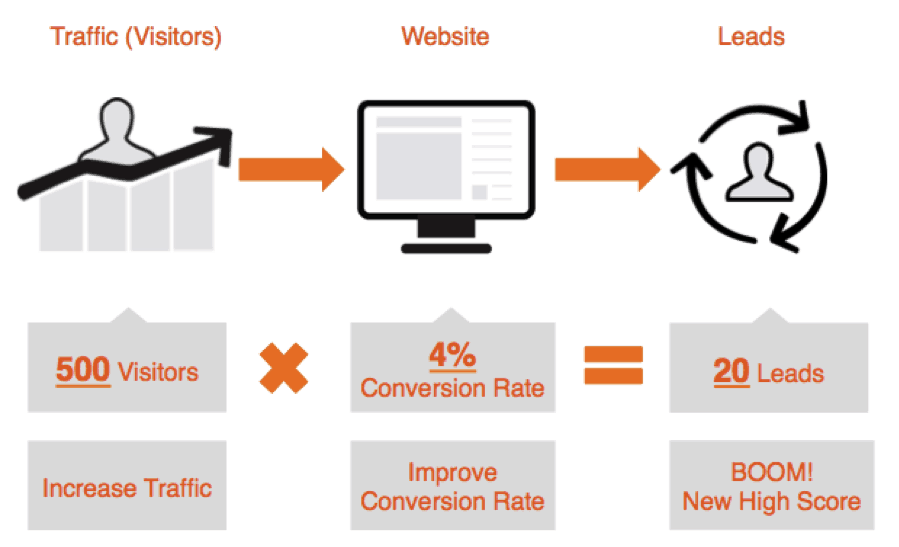
You can find your VTL rate by taking the total number of visitors and dividing it by the total number of leads.
If your VTL rate is low for the month, it may be an issue with your target audience, not necessarily your marketing channels or tactics.
If you notice significant changes in your VTL rate over the course of several months, you will need to figure out which areas are falling short (organic traffic, social media, email, PPC, etc.).
These aren’t things you will see in a matter of days or weeks.
Conclusion
Monthly reporting is absolutely necessary.
It gives you insight into the overall success of your marketing strategy, and it shows you where the major leaks in your sales funnel might be.
But you still need to be looking at your metrics more than once a month.
Even if you don’t put together reports every week or every day the same way you would at the end of the month, you should still monitor those metrics regularly.
Check your dashboards in the morning. Look at your analytics before you leave at night.
Make any observations possible and catch patterns before they turn into something major.
If you aren’t tracking your metrics on a weekly and daily basis, you might be missing huge opportunities to course correct before the month is through.
-
 CEO
Garrett Mehrguth
CEO
Garrett Mehrguth
Did you enjoy this article?
Share it with someone!
